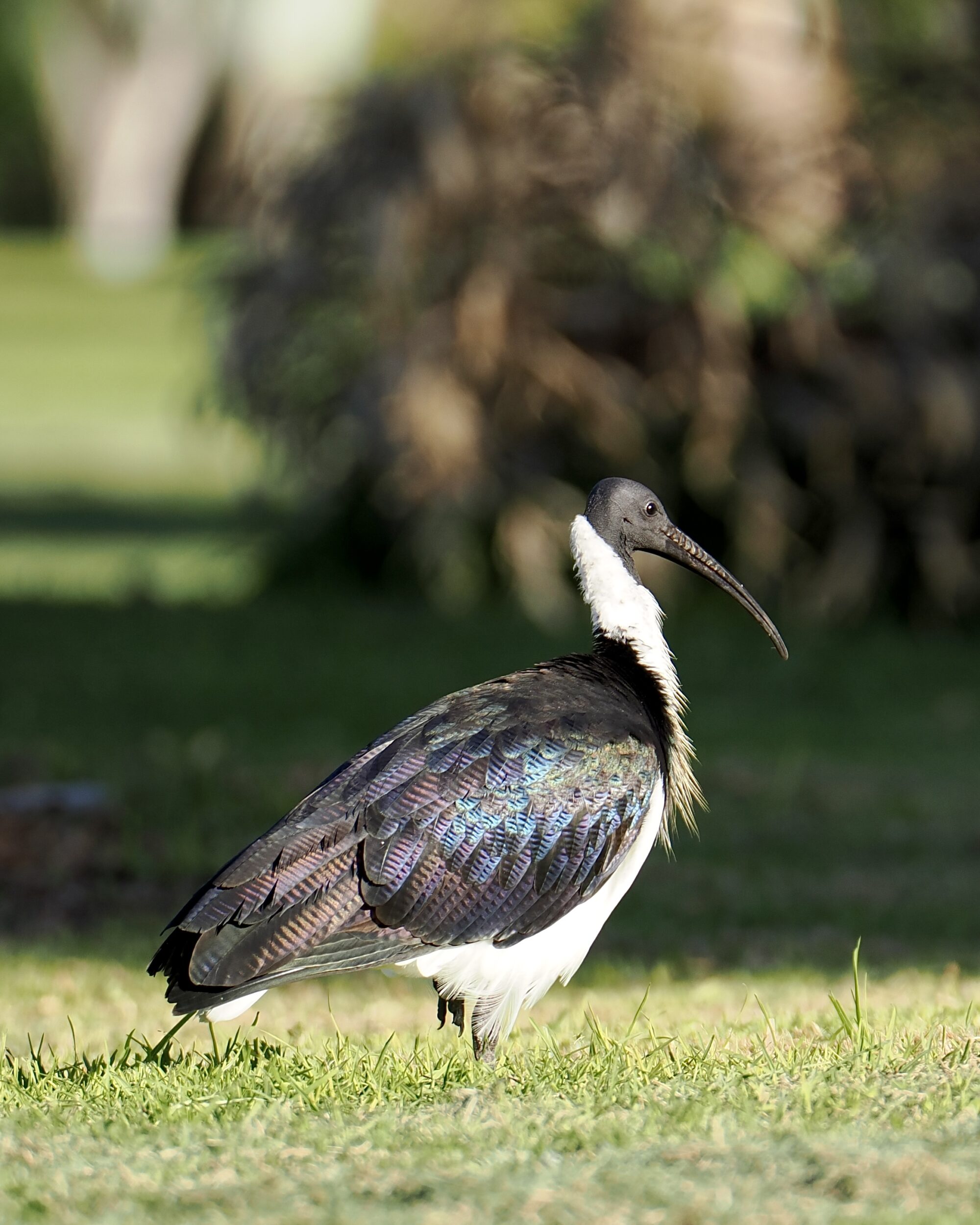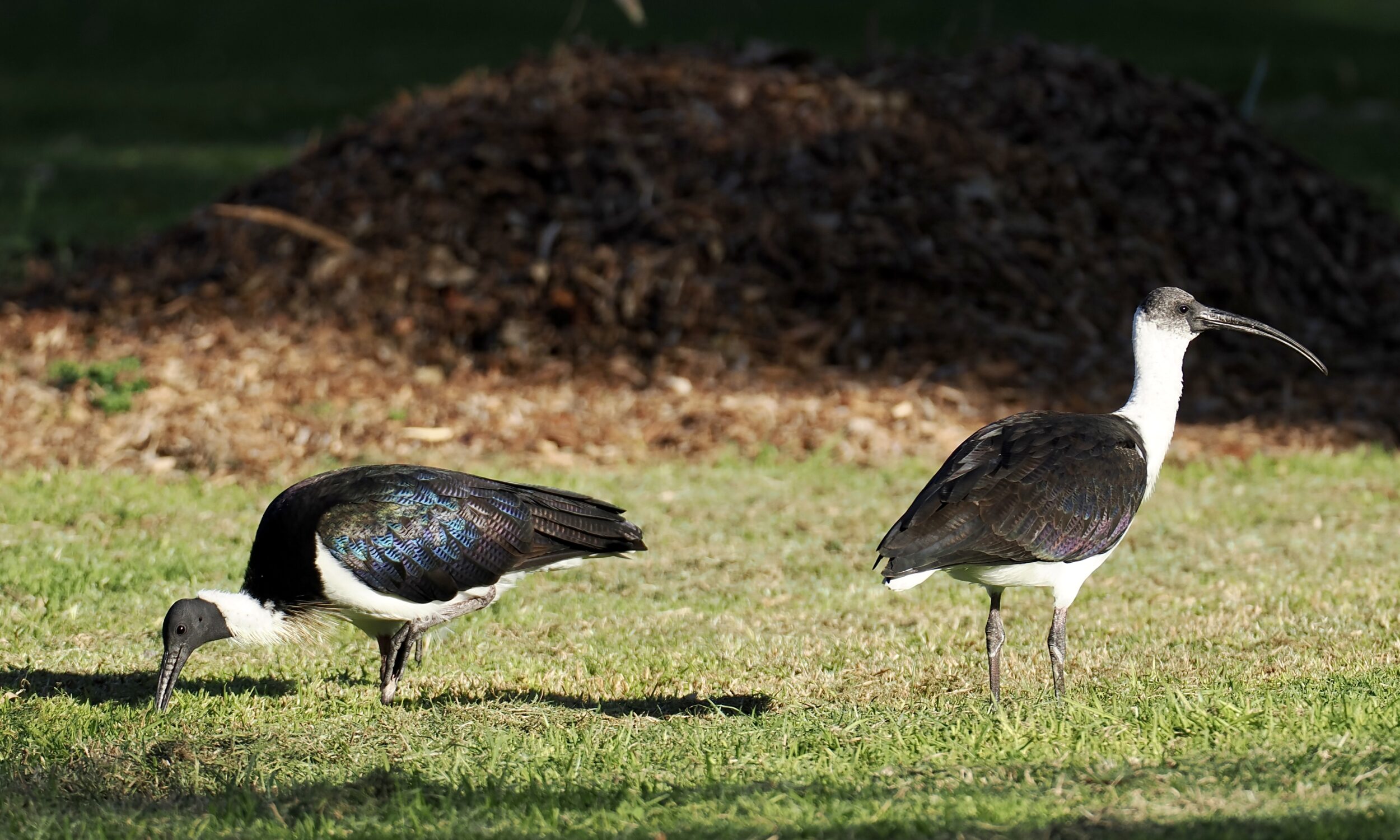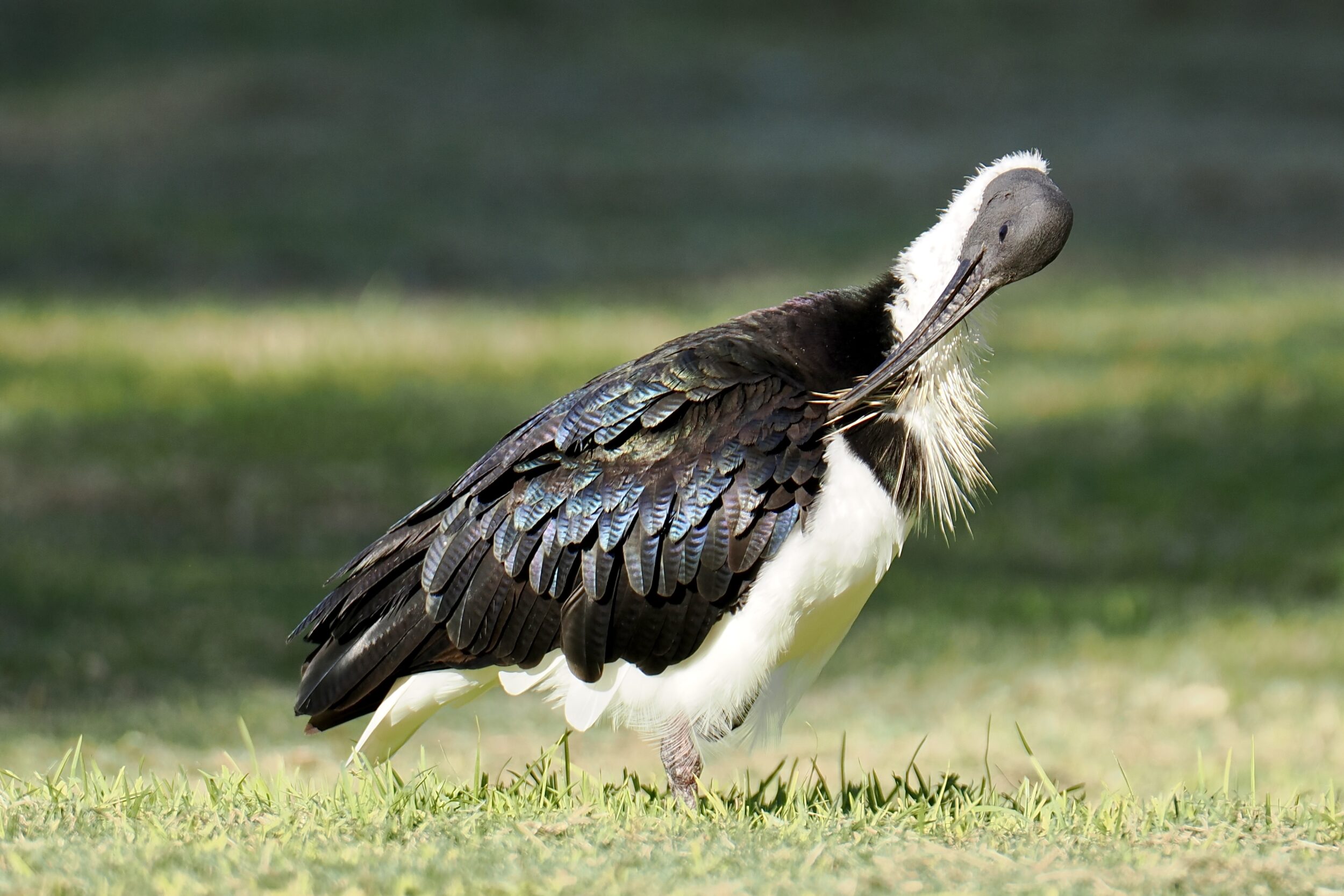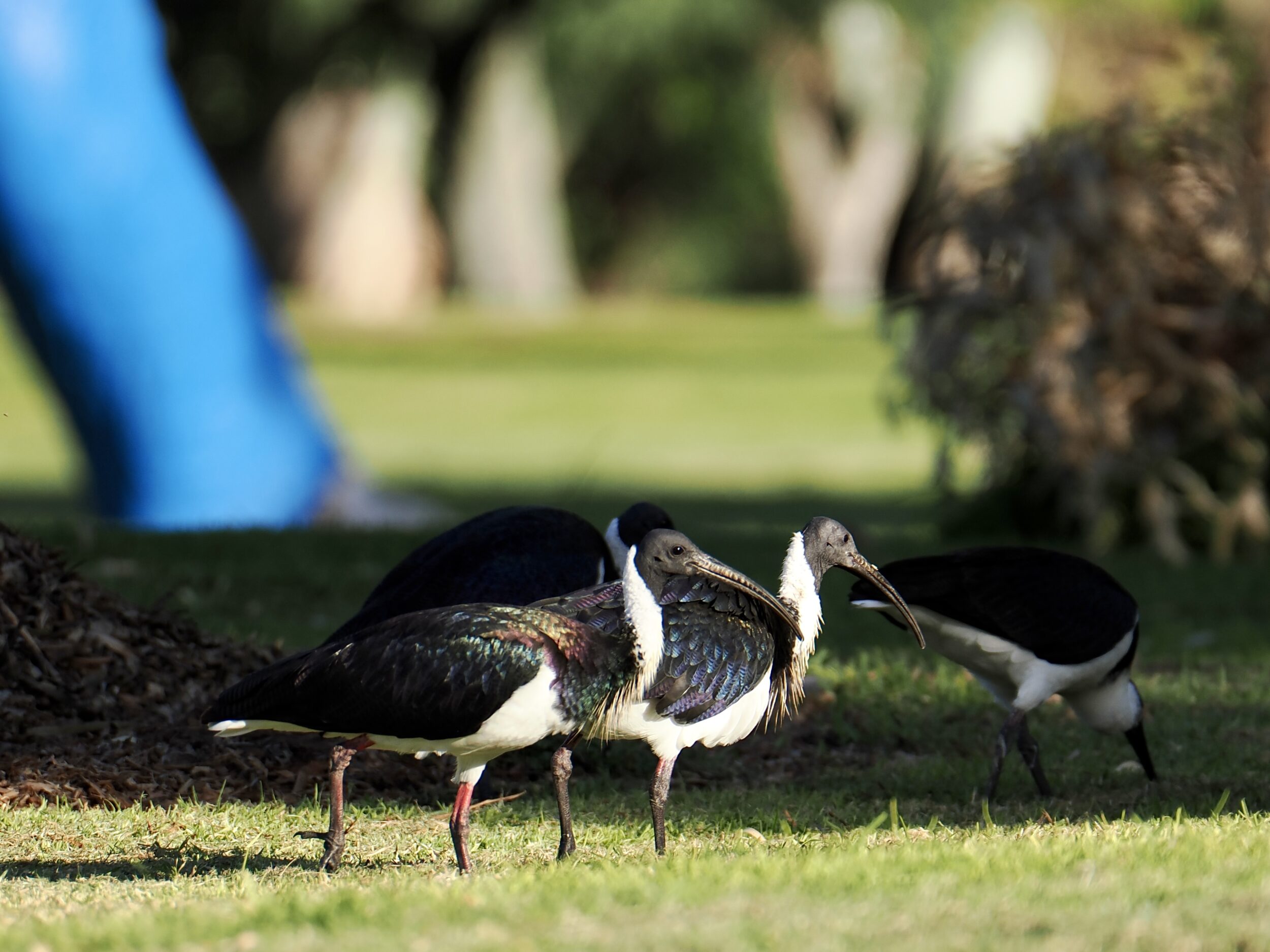Most Australian humans live in substantial cities.
Until late in the 20th century, ibis were not a “regular part of the urban scene”; urban humans who had seen ibis had usually seen them only when said humans “got out of town”.
Mid-20th century humans did not refer to Australian white ibis as “bin chickens – Threskiornis molucca was yet to “invade” our cities.
Back then, the ibis most familiar to Australians was Threskiornis spinicollis – the straw-necked ibis, aka “the farmer’s friend”.
All ibis pictured in this post are of the farmer-friendly kind, but photographed well within a metropolis.
Many (most, I suspect) city-resident humans who encounter these ibis wrongly assume that they are yet more “bin chickens”.

On the ground, the two species are in fact easily-distinguished;
When flying high above a human observer, they present more of a challenge.
The CSIRO has provided an identification guide; click here, have a look, and you will always know what kind of Australian-resident ibis you are looking at!
Australia has three ibis species.
It would be nigh-impossible for anyone to mistake Plegadis falcinellus for either of the others.
All three can be seen in Perth; in July 2022 Pelican Yoga celebrated an encounter with a glossy ibis at Lake Monger.
When you, the sun and the bird (when plumage is in “breeding mode”) are appropriately aligned in relation to each other, glossy and straw-necked ibis can both prove much more colourful than your first glance at their seemingly-dull plumage had led you to expect.

“Bin chickens” have greatly expanded/degraded their diet, since their relatively recent discovery of the easy pickings to be had from Australian city-dwellers’ rubbish bins, dumpsters and tips.
The “farmers’ friends”, however, are still mostly-true to their longstanding nickname.
Even when “visiting the city”, straw-necked ibis usually eat natural, “live” food – mostly insects and insect larvae.
Farmers still have good reason to be happy to see them, and urban humans have no reason to revile them.


Comments